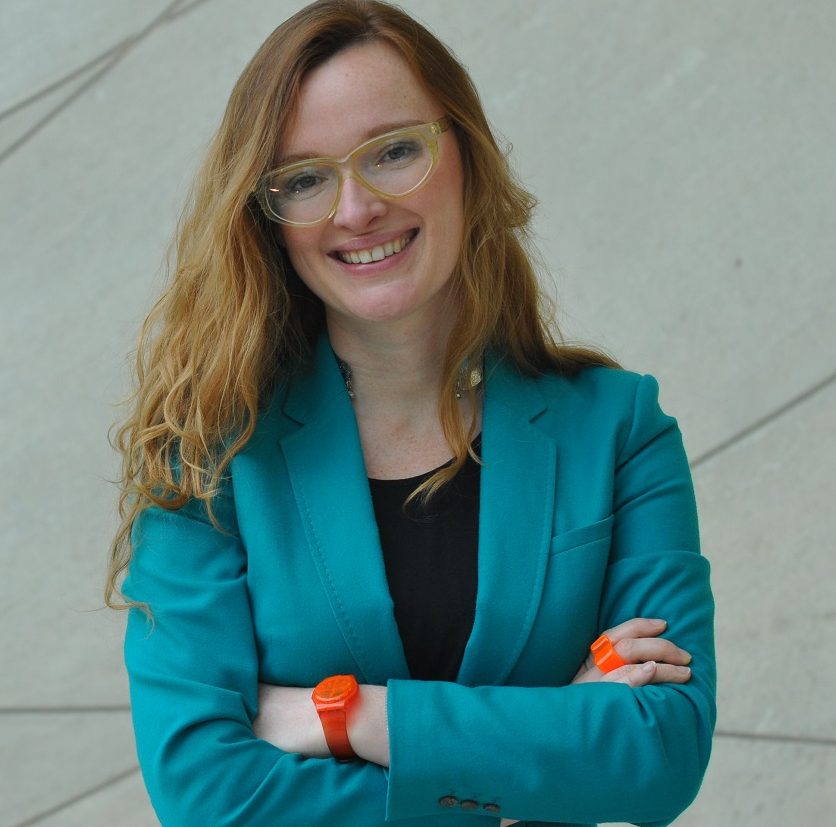
Natalia Romik
artist, architect, politologist, Poland
-
- Research topic:
- Hideouts: the Architectural Analysis of the Secret Infrastructure of Jewish Survival during the Second World War
- Period:
- August 2021

artist, architect, politologist, Poland
Graduate in political science, a practitioner of architecture, designer, artist. In 2018 Romik was awarded a PhD at the Bartlett School of Architecture at University College London for a thesis Post-Jewish Architecture of Memory within Former Eastern European Shtetls. She combines academic research with methods of contemporary art and architecture to explore the (post)Jewish architecture of memory. Romik has been awarded numerous grants, including the London Arts and Humanities Partnership, and the Scholarship of the Minister of Culture and National Heritage of Poland for the project Jewish Architecture of (Non-)Memory in Silesia. From 2007 to 2014, she cooperated with the Nizio Design studio and was a consultant for, among others, the POLIN Museum core exhibition design, co-author of the revitalization of a synagogue in Chmielnik. Romik is a member of the SENNA architecture collective, responsible for designs including the exhibition at the Museum of Jews in Upper Silesia in Gliwice and permanent exhibition at the Brodno Jewish Cemetery in Warsaw entitled "Beit Almin – Eternal Home". In 2018, she co-curated the exhibition Estranged: March ’68 and Its Aftermath(POLIN Museum of Polish Jews, Warsaw 2018). Member of the Association of Polish Architects.
Currently the scholarship holder (postdoctoral research) of the Gerda Henkel Stiftung with the project: Hideouts: the architectural analysis of the secret infrastructure of Jewish survival during the Second World War.
The Ukrainian phase of the project is part of Natalia's current, postdoctoral research about hiding places, supported by the Gerda Henkel Foundation. The project focuses on the hideouts that were used by Jewish citizens of Central and Eastern Europe to survive the Second World War. Persecuted Jews retrofitted existing architecture to conceal themselves and survive under extreme duress. Some of them managed to survive in hiding by themselves, while others were helped by their compatriots. Most of the survivors had to refurbish existing architecture (attics, sewers and cellars) to serve as their hideouts, or build new shelters in dugouts, in the hollows of trees, or even in empty graves. This basic infrastructure of survival not only had to conceal people but also sustain their basic life functions, provide shelter, food, air, water, dispose of waste, etc. – using only a couple of square meters. Some of the hideouts still remain, verging on the brink of decomposition, due to neglect and natural decay. The project focuses on the paradoxical materiality of hideouts, surveying this invisible architectural layer by using the interdisciplinary methods of digital humanities. The research project contributes to the anthropological studies of architecture by accentuating the material and spatial dimension of living in hiding, gathering the evidence of vernacular, architectural creativity employed under life-threatening conditions. Natalia Romik views hideouts as concealed monuments to the ingenuity of Holocaust survivors and their helpers.
The aim of Natalia's project is to test appropriate means of commemoration, using performance-based and art-based research methods to facilitate processes of social memory. The project includes archival research, analysis of the source documents and testimonies, to reconstruct the models of the concealed architecture of survival. She conducts site research that focuses on more experimental, digital, and performative methods. In order to survey hideouts, she works with 3D scanning, architectural modelling, photogrammetry, aerial mapping, video probes, archaeology, geodesic surveying, therefore contributing to the growing field of digital humanities. To commemorate hideouts, she will create silicon forms, sculptural casts, architectural models, and commemorative installations of hideouts, that will be exhibited and used in public performances. The results of this research will be presented in 2022 at the exhibitions at Zachęta National Gallery of Art and the TRAFO Center for Contemporary Art in Szczecin. Together with the Lviv Center for Urban History, we will be working on the Ukrainian version of this exhibition.
During her research trip to the Center for Urban History, Natalia has conducted research on the various local sites of Jewish hiding. She has visited the Poltva River in Lviv, where during World War II, the municipal sewage system was used as a hideout by several Jews (including Jacob Berestycki, Paweł, Krystyna, Ignacy and Paulina Chiger, and Halina Wind). In her site research, she was supported by Andriy Ryshtun from Urban Explorers Lviv. Another phase of the research focused on the Ozernaya and Vertreba caves in Ternopil Oblast, where she followed in the footsteps of Sterners family, whom sheltered in these caves during the Holocaust. In this case, Natalia's site-specific research was based on the work of Chris Nicola, and the movie No Place on Earth that he made together with Janett Thobias, featuring the fascinating story of this case. Her trip to the caves was made possible by Larisa Chulovska, Yevheniy Chulovskyi, Sergei Yepifanov, Misha Sokhatsky, and Natalia Mysak.
Another case that Natalia has researched during her short residency in the Center for Urban History was a hideout located in the cellar of a private house in Zhovkva, where Clara Kramer hid during the war with her entire family. The research residency was also an occasion for unexpected discoveries, such as a possible hideout located under the floor in one of the cafes in the old centre of Lviv, and visits to derelict synagogues and prayer houses.
Credits
Portrait: POLIN Museum